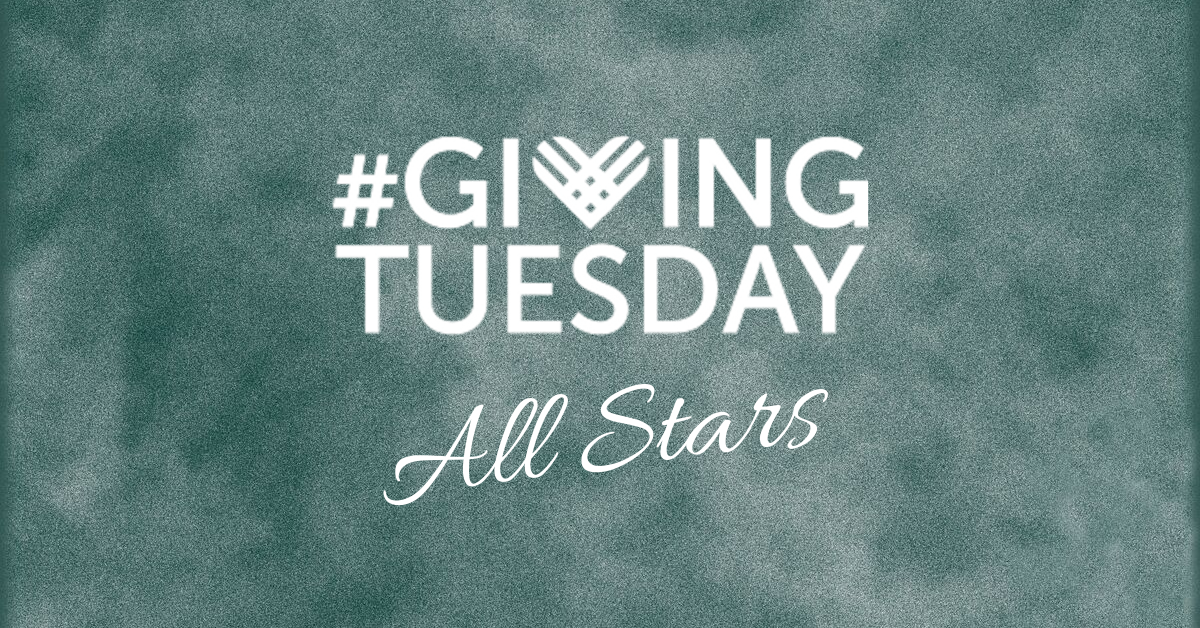min read
Ahh the end of the calendar year. A time of changing colors, holiday cheer, and the pressure to make the most of the giving season and reach fundraising goals. While there are often many moving pieces and the potential for overwhelm, this is a great opportunity to try some creative approaches with your giving program.
There is a lot of noise at the end of the year. Whether it’s due to tax considerations or that it just seems like the “right” time of year, 31% of annual gifts are made during the month of December. With this knowledge, organizations often ramp up communications and are reaching out to their communities more frequently during this time. How does one stand out from all of this noise and convert donors?
Many different tactics can be utilized, but the following ideas will help your organization shine and stand out from the rest.
#1 Leverage National and International Calendar Events

There are commonly recognized holidays, awareness campaigns, and fun days that can be leveraged to increase fundraising opportunities and increase visibility. These are some of the more keystone events that could be planned around, but there are also fun things like “taco day”, “cat day”, and “bison day”. Peruse the calendar to see if there are any days that could work for your institution. This is a reason to reach out to your network and can be a fun way to rally your community.
All of these events are opportunities to ask for financial support but can also be utilized for stewardship touches. On National STEM day, a university could send an email highlighting the incredible work being done by the program and send donors to a fundraising page. By sharing this on multiple channels, such as digital, social, and phone, donors would be presented with a unique and timely giving opportunity. National Philanthropy Day could be a time to reach out to your donors and share the impact they make every day. Try mixing up your mediums by sending a video message or doing a series of social posts.
Calendar events:
- October 26 – National Make a Difference Day
- October 31 – Halloween
- November 8 – National STEM day
- November 11-19 – National Hunger and Homelessness Awareness Week
- November 11 – Veteran’s Day
- November 15 – National Philanthropy Day
- November 28 – Thanksgiving
- December 3 – Giving Tuesday
- December 31 – New Year’s Eve
When looking at the calendar and selecting days to create campaigns around, be mindful of your audience. Not all campaigns will appeal to your whole base, so try targeting the messaging to those that are most likely to engage and create a segmented communication. Along these lines, religious holidays can be tricky to navigate. There are many different holidays celebrated during December, and you never know what your audience may choose to observe. In order to be inclusive, try sending out a more generic holiday note or use messaging about the holiday season as a whole.
Giving Tuesday is an excellent event on the calendar to plan around. As you may know, the day following Cyber Monday is dedicated to giving back and providing contrast to the consumerism-heavy previous weekend. Check out some #GivingTuesday examples here, or download our full #GivingTuesday playbook to get started with planning for the big day.
#2 Create Your Own “Holiday”

If none of the calendar events resonate with you, try creating your own! This could be a specific giving day focused around your organization, or a time to narrow in on a specific type of initiative.
During late November, the University of Richmond hosts an event called “Spiders Helping Spiders”, playing off their mascot. This event highlights a few different student support-focused funds to give to. Last year, the projects included the Career Opportunity Fund, the Student Emergency Fund, and Student Financial aid. The campaign generated nearly $70,000 from 450 donors over a three-day period.
At UC Santa Cruz, the university created three individual giving weeks for their fall campaigns. This approached targeted different segments to appeal to, individualizing the communications that were going out. The series of events included the Student Groups Showdown, Friends Faceoff, and Colleges Compete. By splitting up the topic groups, the individual project teams were able to activate their communities and increase their support.

Setting aside specific moments for targeted campaigns in the fall will help give your community something to rally around, especially if it is targeted towards their interests.
#3 Create a Themed Multi-Channel Campaign

This approach will be similar to creating your own “holiday” but will be a longer-term approach. This could be a multi-month campaign encouraging people to give to one specific project and driving them to an engaging, visual landing page.
When considering a theme for a year-end initiative, focus on compelling narratives and projects that pull at the heartstrings of donors. Finding something that everyone can be on board with, such as addressing food insecurity, will allow donors to feel as if they are able to make a tangible impact on something that matters.
In order to keep a campaign going, it will be important to utilize a variety of communication channels.
To make this easier for your team, create an outreach calendar to organize the communications. Plan out email touches, social media posts, social ads, mailers, and talking points for the phone. Ensure the central project page you are driving people to is easy to navigate, visual, and has a simple giving interface with limited clicks to checkout.
Start by introducing your campaign and let your community know this will be a primary focus for the upcoming months. In your emails and posts, consider focusing on a specific individual’s story. While the problem may be large, research shows that people feel overwhelmed when looking at the entire scope of the problem and are more likely to give if an individual is identified. This could be applied to content creation by either sharing an on-going story throughout the campaign or focusing on a specific person and their journey in each post. The full scope of the problem can be identified but focus on the story of the person. People relate to people.
#4 Utilize Matching Challenge Gifts

Matching challenge gifts are a popular leverage point for nonprofit organizations for a reason. In a study conducted by Yale researcher Dean Karlan, he found that 20% more donors made a gift to a fundraising appeal when there was a matching challenge gift available. It didn’t matter the ratio, 1:1, 2:1, 3:1, etc; all that impacted the conversion was the existence of the external incentive.
This approach is a great way to connect with major gift prospects and engage them in year-end giving. Many larger gift donors are interested in encouraging others to give, so creating a matching challenge will assist in bringing in the larger dollars and driving more donors at the same time.
Regardless of your approach, now is the time to start planning and executing your year-end efforts. May the funds be with you!







